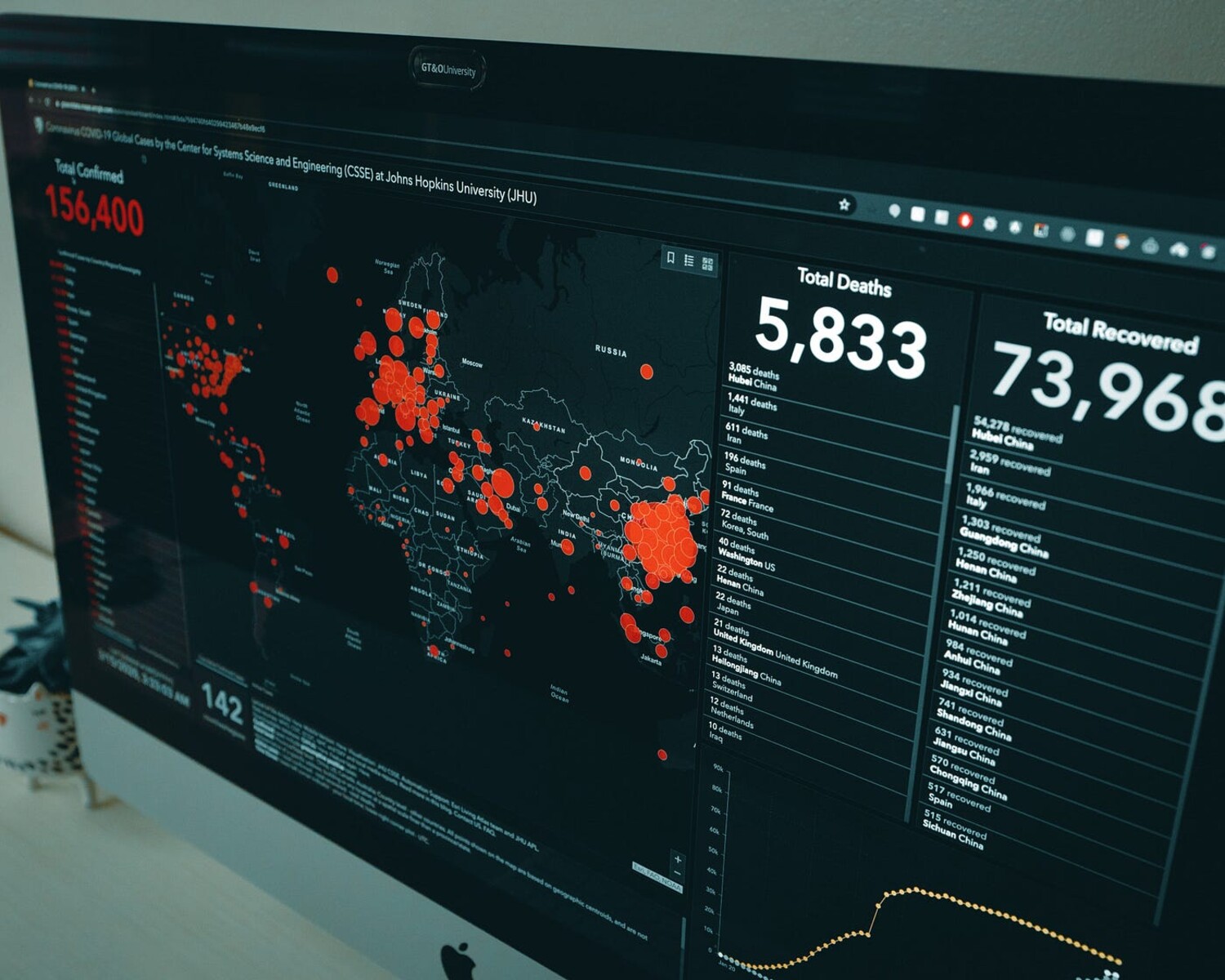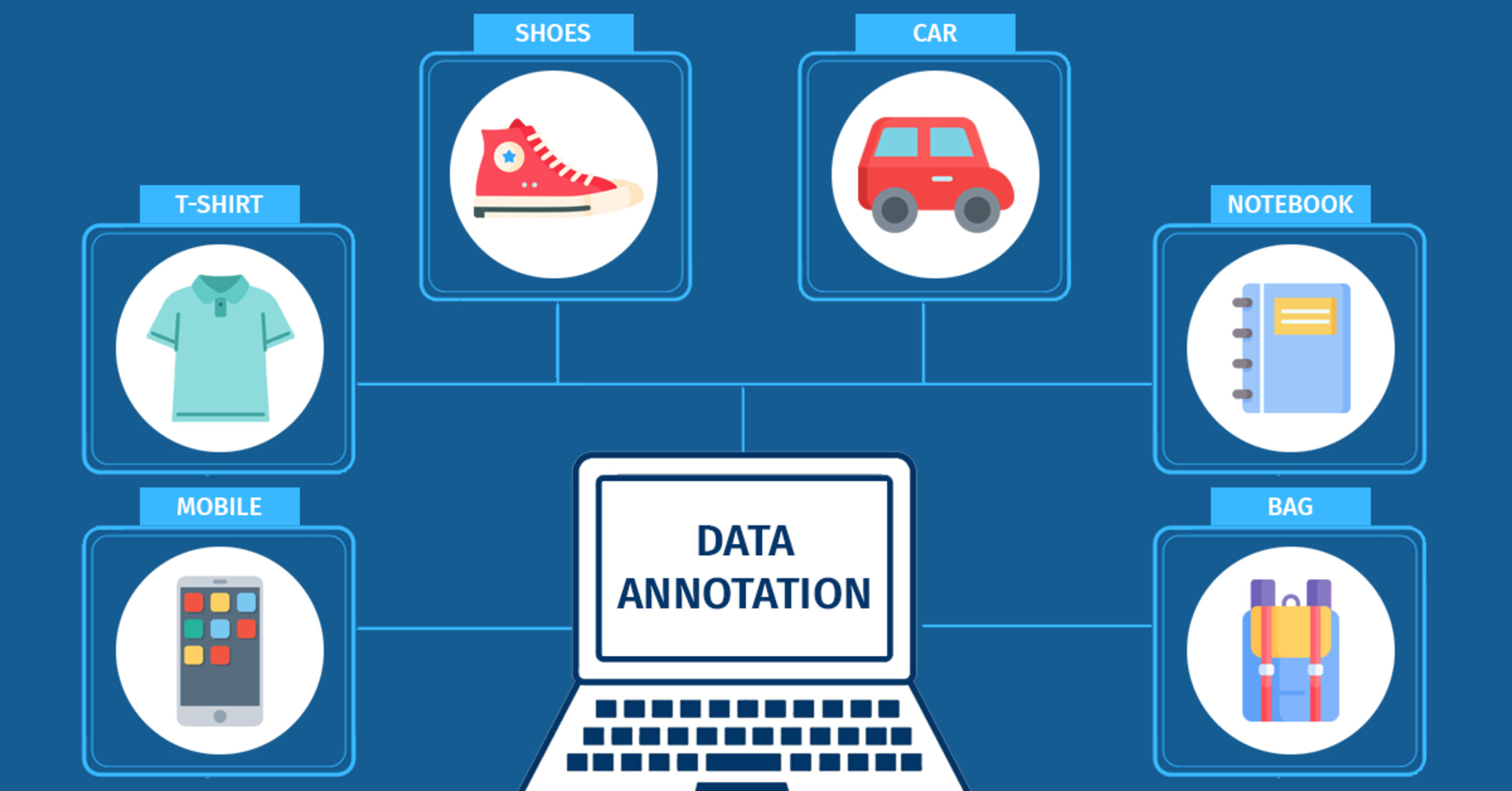Introduction
In the field of machine learning, calibration refers to the process of aligning the predicted probabilities of a model with the actual probabilities of the events it is trying to predict. In simpler terms, calibration ensures that the confidence levels assigned by a machine learning model accurately reflect the likelihood of an event occurring.
When a machine learning model is well-calibrated, it means that if the model predicts a 70% probability of rain, it should rain approximately 70% of the time. Calibration is essential because accurately calibrated models are more reliable and trustworthy. They provide a better understanding of how confident we can be in the predictions made by the model.
Calibration becomes particularly crucial when deploying machine learning models in real-world applications where the reliability of predictions is of utmost importance. For example, in medical diagnosis or financial forecasting, accurate calibration ensures that the probabilities assigned by the model can be used to make well-informed decisions.
Failure to calibrate a model properly can result in overconfident or underconfident predictions. An overconfident model assigns higher probabilities to events than they actually occur, leading to misleading results. On the other hand, an underconfident model assigns lower probabilities, leading to missed opportunities and a lack of trust in the model’s capabilities.
Calibration can be particularly challenging in machine learning, as different models have different characteristics that can impact their calibration. Some models may be naturally well-calibrated, while others may require additional techniques to improve their calibration performance.
In this article, we will explore the concept of calibration in machine learning in more detail. We will discuss why calibration is important, different methods of calibration, and various techniques for improving the calibration of machine learning models. By understanding calibration and its significance, you will be able to assess the reliability and confidence levels associated with predictions made by machine learning models.
Understanding Calibration in Machine Learning
Calibration in machine learning refers to the process of aligning the predicted probabilities of a model with the actual probabilities of the events it is attempting to predict. In other words, it ensures that the confidence levels assigned by the model accurately reflect the true likelihood of an event occurring.
When a machine learning model is well-calibrated, it means that if it predicts a 70% probability of an event happening, it should occur approximately 70% of the time. This alignment between predicted probabilities and actual outcomes is crucial for building reliable and trustworthy models.
However, it is important to note that most machine learning models naturally produce biased probabilities. For example, a model may consistently overestimate or underestimate the likelihood of certain events. This lack of calibration can lead to misleading results and affect decision-making based on the model’s predictions.
To improve calibration, it is important to evaluate and quantify the calibration performance of a model. One commonly used method for assessing calibration is through the use of reliability diagrams. These diagrams plot the predicted probabilities against the observed proportions of events, allowing us to visually inspect how well the model’s probabilities align with the actual outcomes.
Another commonly used metric for evaluating calibration is the Brier score. The Brier score measures the mean squared difference between the predicted probabilities and the actual outcomes, with lower scores indicating better calibration. By analyzing the Brier score, we can objectively assess the calibration performance of a model.
There are several calibration techniques that can be applied to improve the calibration performance of machine learning models. One popular technique is Isotonic Regression, which fits a monotonic function to the predicted probabilities, adjusting them to be better calibrated. This approach is particularly useful when the model’s calibration curve exhibits non-monotonic behavior.
Platt scaling is another widely used method for calibration. It involves fitting a logistic regression model to the predicted probabilities and using the resulting probabilities as the calibrated outputs. Platt scaling assumes a sigmoidal relationship between the predicted scores and the true probabilities, providing a reliable calibration transformation.
Temperature scaling is a simple and effective technique for calibrating models that output temperature-sensitive logits. By dividing the predicted scores by a learned temperature parameter, the model’s confidence levels can be adjusted to improve calibration.
In summary, calibration is an important aspect of machine learning that ensures the alignment of predicted probabilities with actual outcomes. By understanding the calibration process and employing appropriate techniques, we can enhance the reliability and trustworthiness of machine learning models, leading to more accurate and meaningful predictions.
Why is Calibration Important?
Calibration is a critical aspect of machine learning because it directly impacts the reliability and trustworthiness of predictions made by models. Here are several key reasons why calibration is important:
1. Accurate Probability Estimation: Calibration ensures that the predicted probabilities assigned by a machine learning model accurately reflect the true likelihood of events occurring. Well-calibrated models provide reliable estimates of probabilities, enabling users to make informed decisions based on the confidence levels assigned by the model.
2. Trust and Confidence: Calibrated models inspire trust and confidence among users. When a model’s predicted probabilities align with the real-world outcomes, it enhances the credibility of the model and instills confidence in its predictions. This is particularly important in critical applications such as healthcare, finance, and safety-related systems where accurate predictions are crucial.
3. Risk Assessment and Decision Making: Calibration allows for proper risk assessment and decision making. By understanding the calibrated probabilities, stakeholders can effectively evaluate the potential risks associated with different outcomes. For example, in medical diagnosis, calibrated probabilities assist doctors in assessing the likelihood of diseases, which aids in treatment planning and patient management.
4. Model Evaluation: Calibration provides a robust method for evaluating the performance of machine learning models. Assessing the calibration properties helps in identifying any biases or inconsistencies within the models, leading to improved model selection and refinement.
5. Ethical Considerations: Calibration plays a crucial role in addressing ethical considerations. Biased or poorly calibrated models can have significant consequences, such as discriminatory decisions or incorrect risk assessments. Calibration helps mitigate such biases and ensures fair and equitable outcomes.
6. Transparency and Interpretability: Calibrated models are easier to interpret and explain. When predictions are well-calibrated, stakeholders can better understand the underlying reasoning behind the assigned probabilities. This interpretability is especially valuable when dealing with complex models or when presenting results to non-technical audiences.
Overall, calibration is important because it enhances the accuracy, trustworthiness, and interpretability of machine learning models. By ensuring that predicted probabilities align with observed outcomes, calibration enables more informed decision making and minimizes the risks associated with biased or unreliable predictions.
Types of Calibration Methods
There are various methods available for calibrating machine learning models to ensure that their predicted probabilities align with the actual probabilities. These calibration methods can be broadly categorized into three main types: reliability diagrams, Brier score, and calibration metrics. Let’s explore each of these types in more detail:
1. Reliability Diagrams: Reliability diagrams, also known as calibration plots, provide a visual representation of how well a model’s predicted probabilities align with the true probabilities. These diagrams divide the predicted probabilities into bins or intervals and plot them against the observed proportions of events within each bin. By observing the relationship between the predicted probabilities and the observed proportions, we can assess the calibration performance of the model visually. Ideally, the points on the reliability diagram should fall along the diagonal line, indicating perfect calibration.
2. Brier Score: The Brier score is a widely used metric that quantifies the calibration performance of a model. It computes the mean squared difference between the predicted probabilities and the actual outcomes, providing an overall measure of the model’s calibration accuracy. A lower Brier score indicates better calibration, with a perfect score of 0 indicating perfect alignment between predicted and observed probabilities. The Brier score can be used to compare the calibration performance of different models and evaluate the effectiveness of calibration techniques.
3. Calibration Metrics: There are several calibration metrics that provide additional insights into the calibration performance of machine learning models. Some common calibration metrics include the Expected Calibration Error (ECE), which calculates the difference between the average predicted probability and the observed accuracy; the Maximum Calibration Error (MCE), which measures the maximum absolute difference between predicted and observed probabilities; and the Calibration Slope, which indicates the scaling factor between predicted and observed probabilities. These metrics help to further understand the calibration behavior and the potential areas for improvement.
By utilizing these different types of calibration methods, we can assess and improve the calibration performance of machine learning models. Reliability diagrams offer a visual representation, the Brier score provides a quantitative measure, and calibration metrics give additional insights into specific calibration properties. Combining these methods allows for a comprehensive evaluation of a model’s calibration and guides the selection of appropriate techniques to enhance calibration accuracy.
Reliability Diagrams
Reliability diagrams, also known as calibration plots, are powerful tools for visually assessing the calibration performance of machine learning models. They provide a graphical representation of how well a model’s predicted probabilities align with the true probabilities of events. Reliability diagrams divide the predicted probabilities into bins or intervals and plot them against the observed proportions of events within each bin.
The main objective of a reliability diagram is to examine the agreement between the predicted probabilities and the actual outcomes. A perfectly calibrated model should have points that fall along the diagonal line, indicating perfect alignment between predicted and observed probabilities. Any deviations from the diagonal line suggest areas where the model’s calibration may be lacking.
By analyzing a reliability diagram, we can identify potential issues with a model’s calibration. For example, if the points on the diagram consistently lie above the diagonal line, it indicates that the model is overconfident and assigns higher probabilities than the events actually occur. Conversely, if the points lie below the diagonal line, the model is underconfident and assigns lower probabilities than the events actually occur.
Reliability diagrams provide valuable insights for model calibration adjustments. Based on the observed deviations from the diagonal line, appropriate calibration techniques can be applied to improve the alignment between predicted and observed probabilities. For example, if the model exhibits overconfidence, techniques such as Platt scaling or temperature scaling can be applied to adjust the probabilities and improve calibration accuracy.
It is important to note that reliability diagrams are most effective when the number of samples within each predicted probability bin is sufficiently large. This ensures that the observed proportions accurately represent the true probabilities. Therefore, when constructing reliability diagrams, it is recommended to have a sufficiently large dataset to obtain reliable calibration assessments.
In summary, reliability diagrams offer a valuable visual representation of a model’s calibration performance. They highlight any deviations between predicted and observed probabilities, allowing for targeted adjustments to improve calibration accuracy. By utilizing reliability diagrams alongside other calibration methods, practitioners can ensure that their machine learning models provide reliable and trustworthy predictions.
Brier Score
The Brier score is a widely-used metric for evaluating the calibration performance of machine learning models. It measures the mean squared difference between the predicted probabilities and the actual outcomes, providing a quantitative assessment of how well a model’s probabilities align with the observed probabilities. A lower Brier score indicates better calibration, with a perfect score of 0 indicating perfect alignment between predicted and observed probabilities.
The Brier score is calculated by taking the average of the squared differences between the predicted probabilities and the corresponding binary outcomes. For each instance, the predicted probability for the positive class is compared to the actual binary outcome, resulting in a squared difference. These squared differences are then averaged across all instances to obtain the Brier score.
By analyzing the Brier score, we can gain insights into the calibration accuracy of a model. Higher Brier scores indicate poorer calibration, meaning that the model’s predicted probabilities deviate significantly from the actual probabilities. Conversely, lower Brier scores indicate better calibration, with the model’s probabilities closely aligning with the observed outcomes.
The Brier score provides a useful measure for comparing the calibration performance of different models. By calculating and comparing the Brier scores of different models, practitioners can assess which model provides better-calibrated predictions. This allows for informed decision-making when selecting the most reliable and trustworthy model for a given task.
It is important to note that the Brier score is sensitive to the class imbalance in the dataset. In cases where the positive and negative classes are imbalanced, the Brier score may provide a skewed evaluation of calibration. Therefore, it is recommended to consider other calibration metrics and methods, such as reliability diagrams and calibration metrics, in conjunction with the Brier score to obtain a comprehensive assessment of a model’s calibration performance.
In summary, the Brier score is a valuable metric for evaluating the calibration accuracy of machine learning models. By calculating the mean squared difference between predicted and observed probabilities, the Brier score provides a quantitative measure of calibration performance. Combined with other calibration methods, the Brier score assists in selecting well-calibrated models that provide reliable and trustworthy predictions.
Calibration Metrics
In addition to reliability diagrams and the Brier score, various calibration metrics are used to assess the calibration performance of machine learning models. These metrics provide additional insights and quantitative measures to evaluate the alignment between predicted probabilities and observed outcomes. Let’s explore some common calibration metrics:
1. Expected Calibration Error (ECE): The Expected Calibration Error measures the difference between the average predicted probability and the observed accuracy. It divides the predicted probabilities into equally spaced intervals or bins and calculates the difference between the mean predicted probability and the proportion of observed positive outcomes within each bin. The ECE provides an overall measure of calibration accuracy, with lower scores indicating better calibration.
2. Maximum Calibration Error (MCE): The Maximum Calibration Error calculates the maximum absolute difference between the predicted probabilities and the observed proportions within each bin. It identifies the largest discrepancy between predicted and observed probabilities and can help pinpoint the specific areas where calibration performance is weakest.
3. Calibration Slope: The Calibration Slope measures the scaling factor between predicted probabilities and observed proportions. It evaluates how well a model’s predicted probabilities align with the true probabilities. A perfect calibration slope is equal to 1, indicating that the predicted probabilities accurately reflect the observed proportions.
4. Calibration Belt: The Calibration Belt is another visual tool to assess the calibration performance of models. It plots the predicted probabilities on the x-axis and the observed proportions on the y-axis, forming a diagonal line representing perfect calibration. The belt consists of concentric bands that show the confidence intervals around the diagonal line, helping to identify the regions where the model’s calibration may be lacking.
These calibration metrics complement reliability diagrams and the Brier score, providing a comprehensive evaluation of a model’s calibration properties. They offer additional perspectives on the calibration performance, such as the average error, maximum discrepancy, scaling factor, and overall calibration accuracy. By considering these metrics collectively, practitioners can gain a more nuanced understanding of a model’s calibration and make informed decisions regarding calibration adjustments.
It is important to note that the choice of calibration metrics depends on the specific application and the characteristics of the dataset. Different metrics may be more suitable for different scenarios, and it is recommended to assess the calibration performance from multiple angles to obtain a comprehensive evaluation.
In summary, calibration metrics offer additional insights and quantitative measures to evaluate the calibration accuracy of machine learning models. Alongside reliability diagrams and the Brier score, these metrics assist practitioners in assessing and improving the alignment between predicted probabilities and observed outcomes, enhancing the reliability and trustworthiness of predictions.
Calibration Techniques
Calibration techniques play a crucial role in improving the calibration performance of machine learning models. These techniques aim to adjust the predicted probabilities to better align them with the true probabilities of events. Let’s explore some popular calibration techniques:
1. Isotonic Regression: Isotonic regression is a non-parametric technique that fits a monotonic function to the predicted probabilities. It adjusts the probabilities to ensure that they are monotonically increasing or decreasing with respect to the true probabilities. Isotonic regression is particularly useful when the model’s calibration curve exhibits non-monotonic behavior, and it provides a flexible way to improve the calibration accuracy.
2. Platt Scaling: Platt scaling is a simple yet effective calibration method. It involves fitting a logistic regression model to the predicted probabilities, using the true probabilities as the binary outcomes. The resulting probabilities from the logistic regression model can be used as the calibrated probabilities. Platt scaling assumes a sigmoidal relationship between the predicted scores and the true probabilities, providing a reliable calibration transformation.
3. Temperature Scaling: Temperature scaling is a straightforward technique that can improve the calibration of models that output temperature-sensitive logits. By dividing the predicted scores by a learned temperature parameter, the model’s confidence levels can be adjusted to improve calibration. Temperature scaling is a simple post-processing step that does not require retraining the model and can be easily implemented.
4. Ensemble Methods: Ensemble methods, such as stacking and bagging, can also be utilized for calibration. By combining multiple models and leveraging their diverse predictions, ensembling can improve the calibration accuracy. For example, by training a stack of models and applying proper weight averaging, the ensemble’s predicted probabilities can be better calibrated and more reliable.
5. Bayesian Methods: Bayesian methods provide a probabilistic framework for calibration. Bayesian calibration involves specifying a prior distribution over the model’s parameters and updating this distribution based on the observed data. By incorporating prior knowledge and iteratively updating probabilities, Bayesian calibration can improve the model’s calibration performance by integrating uncertainties.
These calibration techniques offer a range of options to enhance the calibration accuracy of machine learning models. The choice of technique depends on the specific characteristics of the model and the dataset. It is important to experiment with different techniques and assess their effectiveness using calibration metrics to select the most suitable approach for a given task.
In practice, a combination of calibration techniques may be utilized to achieve the desired level of calibration accuracy. By implementing these techniques, practitioners can improve the reliability and trustworthiness of predictions, making their machine learning models more valuable in real-world applications.
Isotonic Regression
Isotonic regression is a calibration technique that aims to improve the calibration performance of machine learning models. It is a non-parametric method that fits a monotonic function to the predicted probabilities, adjusting them to be better aligned with the true probabilities of events. Isotonic regression is particularly useful when the calibration curve of a model exhibits non-monotonic behavior.
The main idea behind isotonic regression is to ensure that the predicted probabilities are monotonically increasing or decreasing with respect to the true probabilities. This is achieved by finding a mapping function that transforms the predicted probabilities while preserving their ordering. By applying isotonic regression, the model’s predicted probabilities can be adjusted to better reflect the actual likelihood of events occurring.
The isotonic regression algorithm begins by initializing the predicted probabilities as the initial estimates. It then iteratively updates the probabilities, adjusting them based on whether neighboring predictions are overestimating or underestimating the observed probabilities. The algorithm continues until convergence or a specified number of iterations.
Isotonic regression can be applied to both binary and multi-class classification problems. In binary classification, the predicted probabilities are adjusted such that the probabilities for the positive class are monotonically increasing with respect to the true probabilities. In multi-class classification, isotonic regression can be performed independently for each class to ensure that the predicted probabilities have a consistent ordering.
One advantage of isotonic regression is its flexibility in handling non-linear and non-monotonic calibration curves. Models that exhibit complex calibration behavior, such as overconfidence or underconfidence across different probability ranges, can benefit from isotonic regression to improve calibration accuracy.
It is important to note that isotonic regression is sensitive to the number of data points within each predicted probability bin. If the number of samples is limited, the interpolation done by isotonic regression may not accurately represent the true probabilities. Therefore, it is recommended to have a sufficiently large dataset to ensure reliable results.
In summary, isotonic regression is a valuable calibration technique that adjusts predicted probabilities to improve the calibration performance of machine learning models. By ensuring monotonicity between predicted and true probabilities, isotonic regression enhances the reliability and trustworthiness of predictions. When applied appropriately, isotonic regression can optimize calibration accuracy, particularly for models with non-monotonic calibration curves.
Platt Scaling
Platt scaling is a widely-used calibration technique that aims to improve the calibration performance of machine learning models. It involves fitting a logistic regression model to the predicted probabilities of a binary classification model and using the resulting probabilities as the calibrated outputs.
The main idea behind Platt scaling is to establish a sigmoidal relationship between the predicted scores or logits and the true probabilities. This sigmoidal relationship allows the calibration of probabilities to better align with the observed outcomes. By applying Platt scaling, the predicted probabilities of the model can be effectively adjusted to improve calibration accuracy.
To implement Platt scaling, a logistic regression model is trained using the predicted scores or logits of the original model as the input and the true binary outcomes as the target variable. The logistic regression model learns the parameters that define the sigmoidal transformation. Once the logistic regression model is trained, the predicted probabilities from this model can be treated as the calibrated probabilities.
Platt scaling assumes that the relationship between the predicted scores and the true probabilities follows a sigmoid function. This assumption provides a reliable calibration transformation that adjusts the confidence levels of the model. By mapping the predicted scores to calibrated probabilities using the learned parameters, Platt scaling improves the alignment between predicted and observed probabilities.
One advantage of Platt scaling is its simplicity and ease of implementation. It does not require retraining the original model and can be applied as a post-processing step. However, it is worth noting that Platt scaling relies on the assumption of a sigmoidal relationship and may have limitations in cases where this assumption is violated.
When applying Platt scaling, it is important to have a well-calibrated binary classification model as the starting point. If the original model is poorly calibrated, Platt scaling may not produce accurate calibration results. Therefore, it is recommended to evaluate the calibration properties of the original model using methods like reliability diagrams and the Brier score before applying Platt scaling.
In summary, Platt scaling is a popular calibration technique that uses a logistic regression model to adjust the predicted probabilities of a binary classification model. By establishing a sigmoidal relationship between the predicted scores and the true probabilities, Platt scaling improves the calibration accuracy of machine learning models. When applied properly, Platt scaling can enhance the reliability and trustworthiness of predictions, making machine learning models more effective in real-world scenarios.
Temperature Scaling
Temperature scaling is a simple yet effective calibration technique that adjusts the probabilities outputted by a machine learning model. It is particularly useful for models that output temperature-sensitive logits. By dividing the predicted scores by a learned temperature parameter, temperature scaling ensures that the model’s confidence levels are properly calibrated.
The main idea behind temperature scaling is to soften the predictions made by the model by adjusting the temperature of the softmax function. The softmax function converts the logits into probabilities by exponentiating and normalizing them. By scaling the temperature parameter, the impact of the logits on the probabilities can be adjusted.
Temperature scaling is a post-processing step that can be easily implemented. To calibrate the probabilities, a separate validation set is used. The predicted scores, also known as logits, for this validation set are scaled by dividing them by the learned temperature parameter. The calibrated probabilities are then obtained by applying the softmax function to the scaled logits.
The temperature parameter is typically learned by minimizing the negative log-likelihood loss on the validation set. This is done by treating the temperature as a trainable parameter and optimizing it using gradient descent or any other optimization technique. The optimization process adjusts the temperature value to optimize the calibration of the model’s probabilities.
One advantage of temperature scaling is its simplicity and interpretability. It does not require any additional complex models or extensive retraining of the original model. By scaling the temperature, the model’s confidence levels can be effectively adjusted to better align with the observed probabilities.
Temperature scaling assumes that the model’s logits are distributed according to a temperature-sensitive scale. If the logits are well-calibrated and the model’s confidence levels are already reasonable, temperature scaling might not provide significant improvements. Therefore, it is important to evaluate the calibration properties of the model before applying temperature scaling.
Temperature scaling is particularly useful when the model suffers from overconfidence or underconfidence. By adjusting the temperature parameter, temperature scaling can fine-tune the calibration and make the output probabilities more reliable and trustworthy.
In summary, temperature scaling is a simple and effective calibration technique that adjusts the probabilities of a machine learning model. By scaling the temperature parameter, the confidence levels of the model can be calibrated to better align with the observed probabilities. When used appropriately, temperature scaling can enhance the reliability and trustworthiness of predictions, improving the overall performance of machine learning models.
Conclusion
Calibration is a crucial aspect of machine learning that ensures the alignment between predicted probabilities and observed outcomes. Well-calibrated models provide reliable and trustworthy predictions, enhancing their credibility in various applications.
In this article, we explored the concept of calibration in machine learning and its importance. We discussed different types of calibration methods, including reliability diagrams, the Brier score, and calibration metrics, that are used to evaluate the calibration performance of models. These methods offer valuable insights into the alignment between predicted and observed probabilities.
We also examined various calibration techniques, such as isotonic regression, Platt scaling, and temperature scaling. These techniques can be applied to adjust the predicted probabilities and improve calibration accuracy. Each technique has its own strengths and is suited for different scenarios, providing flexible options for practitioners to enhance model calibration.
By employing calibration techniques, practitioners can ensure that their machine learning models provide reliable, well-calibrated predictions. This is of utmost importance in fields such as healthcare, finance, and safety-related applications, where accurate probabilities and trustworthy predictions are crucial for decision-making.
It is important to note that calibration is an ongoing process and should be continuously monitored and evaluated. Calibration properties might change over time, and adjustments may be required to maintain optimal performance. Regularly assessing calibration using appropriate methods and metrics allows for the identification of potential issues and the application of suitable calibration techniques.
Ultimately, calibration improves the reliability, trustworthiness, and interpretability of machine learning models. By ensuring that predicted probabilities align with observed outcomes, calibration enhances the usefulness and effectiveness of models in real-world scenarios.
As the field of machine learning continues to advance, efforts toward calibration will play a significant role in developing more accurate and reliable models. By understanding and implementing calibration techniques, practitioners can contribute to the advancements in machine learning and make informed decisions based on well-calibrated predictions.
























